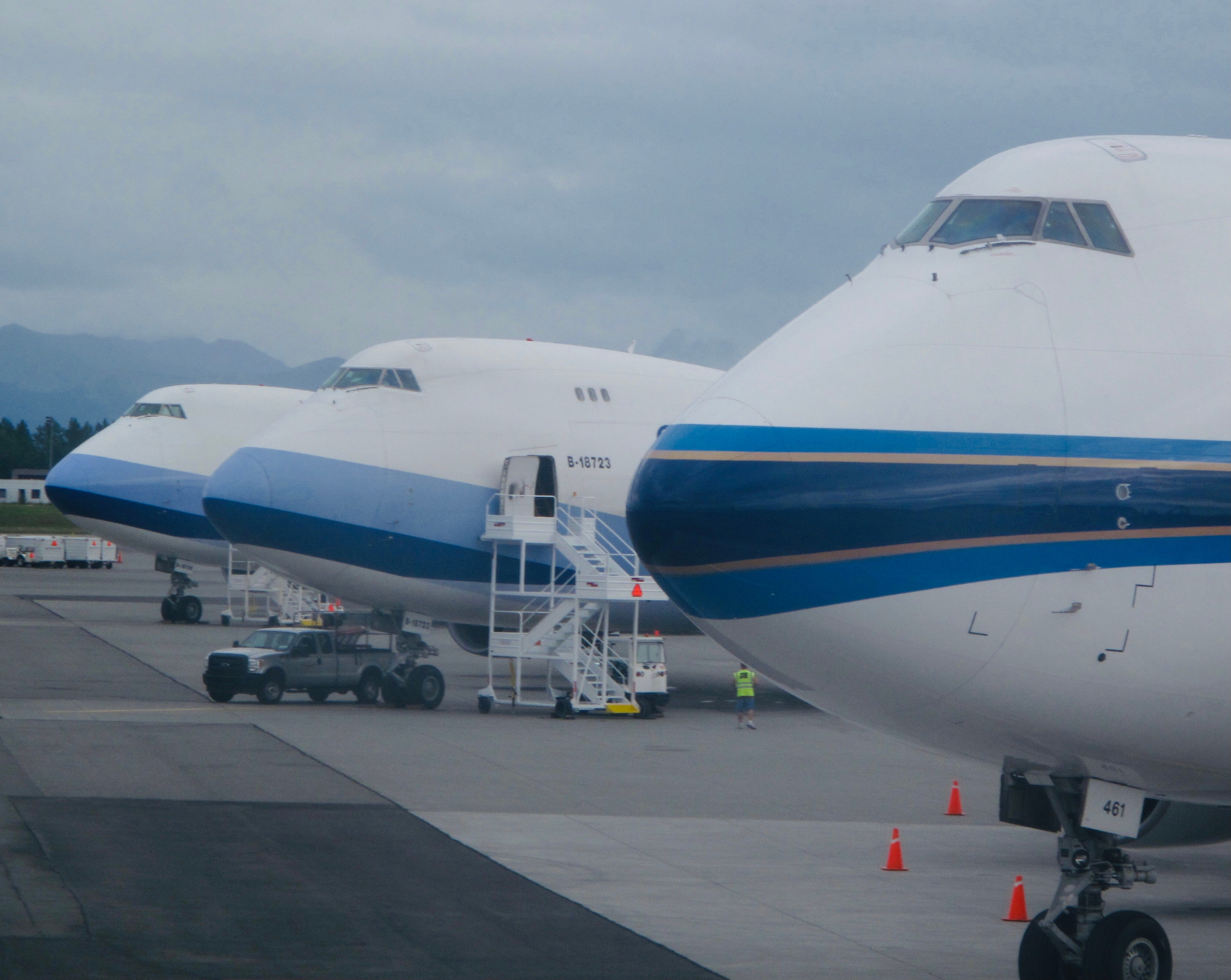Alaskan airport set to be the new stopover between Europe and Asia-Pacific
Plane Talk: Anchorage is set to be the new (old) crossroads between Europe, America and Asia-Pacific

Your support helps us to tell the story
From reproductive rights to climate change to Big Tech, The Independent is on the ground when the story is developing. Whether it's investigating the financials of Elon Musk's pro-Trump PAC or producing our latest documentary, 'The A Word', which shines a light on the American women fighting for reproductive rights, we know how important it is to parse out the facts from the messaging.
At such a critical moment in US history, we need reporters on the ground. Your donation allows us to keep sending journalists to speak to both sides of the story.
The Independent is trusted by Americans across the entire political spectrum. And unlike many other quality news outlets, we choose not to lock Americans out of our reporting and analysis with paywalls. We believe quality journalism should be available to everyone, paid for by those who can afford it.
Your support makes all the difference.However cold you were on Tuesday, the people of Anchorage, Alaska, were more deeply frozen: the day began at -20C.
But the biggest US state’s largest city has reason to celebrate: Ted Stevens Anchorage international airport is to be allowed to handle connections between foreign airlines.
Governor Mike Dunleavy said: “These new passenger transfer rights are an asset that can help grow Alaska’s economy.”
Dubai, Hong Kong and Singapore may not yet be rattled, but America’s most remote major airport may soon become a global passenger hub.
I first visited Ted Stevens airport in the 1980s, when it was the main stop for polar flights between Europe and East Asia. Standby fares of around £100 were available for the first leg of BA’s Heathrow-Anchorage-Tokyo flight. It was the “poor person’s Concorde”: a British Airways departure that arrived, local time, 10 minutes earlier than it had left London.
Quite soon, engines got better and Russia opened up to overflights, rendering the Alaskan dog-leg unnecessary.
For a time, Icelandair flight FI679 took up the time-machine role: the Boeing 757 from Reykjavik to Anchorage ticked off the time zone at a rate faster than one an hour, so you touched down in Alaska, local time, 50 minutes before leaving the Icelandic capital.
Since 2014, Anchorage has not troubled the schedulers of European flights.
The small passenger terminal currently handles fewer than 3 million passengers in a normal year – compared with more than 50 million at the busiest airport, Atlanta.
Anchorage does not even make the top 50 US airports for passenger traffic. Yet it is second only to Memphis in terms of cargo handled, due to its position between Asia and the continental US.
While most of these operations involve dedicated freighters, some passenger planes are flying with only their holds filled with cargo during the coronavirus pandemic.
“These new passenger rights will allow airlines the ability to use belly cargo to support routes with passenger service overlaid,” the airport said in a statement.
The idea is that flights that stop en route are much more efficient than ultra-long-haul trips. While Delhi to San Francisco nonstop is perfectly feasible, it comes with a “weight penalty”. Because it has to carry so much fuel, it cannot handle the same amount of cargo.
Build in a refuelling stop – and Anchorage is on the way between a wide range of Asia and North American cities – and the airline can make more cash. It can also offer connections with, say, a Mumbai-Los Angeles flight synchronised with Delhi-San Francisco, quadrupling the connection opportunities.
The airport also proposes Taipei-Toronto and Brisbane-Chicago flights could be scheduled via Anchorage.
Yet I believe the hub could be more substantial still, connecting the UK and the rest of Europe with the Pacific.
London Gatwick airport briefly had a link to Anchorage and onwards to Honolulu. The extra distance compared with a nonstop flight to the main gateway to Hawaii is just 29 miles.
Stopping to refuel in Alaska on the way from Manchester to Nadi (with the satisfying abbreviation MAN-NAN) adds less than 100 miles.
Edinburgh to Tahiti offers a similar opportunity. Even Heathrow to Auckland, previously routed via Los Angeles on Air New Zealand, is shorter via Anchorage – saving more than 400 miles or nearly one hour’s flying.
Many people choose their hubs based on the stopover prospects. While the bleak midwinter is not ideal for exploring the Anchorage area, from May until September the Alaskan summer is spectacular – with at least 19 hours of daylight in the four weeks from 6 June.
With the UK government far more interested in closing down travel – and, seemingly, the aviation industry – it may be a while before Anchorage appears on the destination board of your local area. But in time the Alaskan airport may become the essential hub for great Pacific adventures.



Join our commenting forum
Join thought-provoking conversations, follow other Independent readers and see their replies
Comments